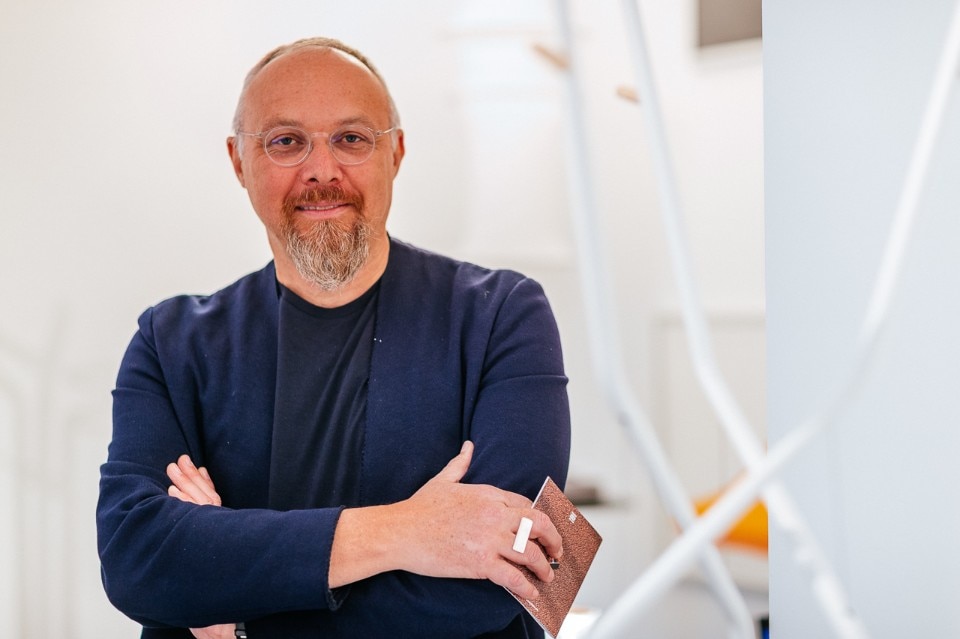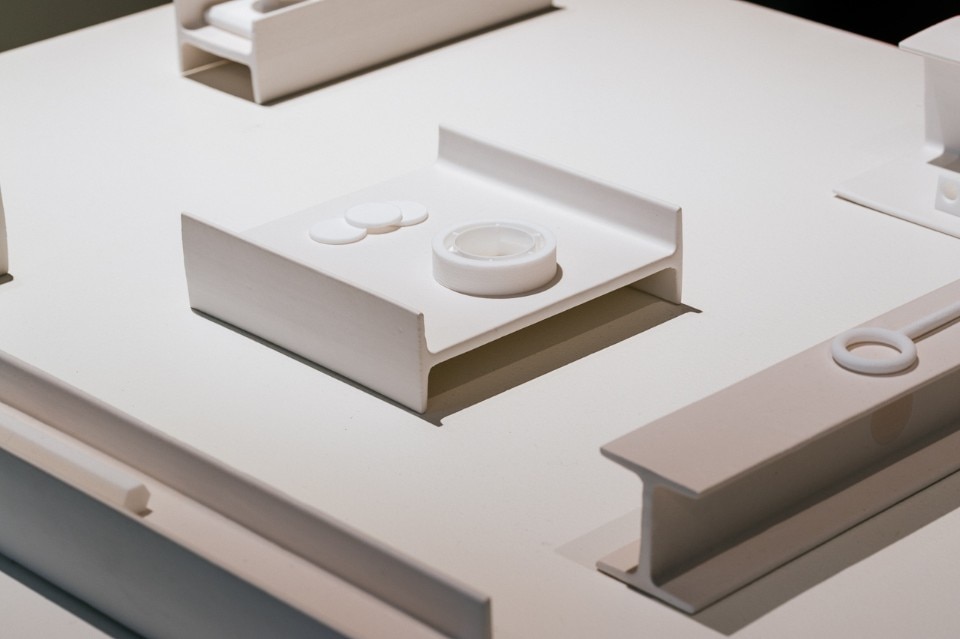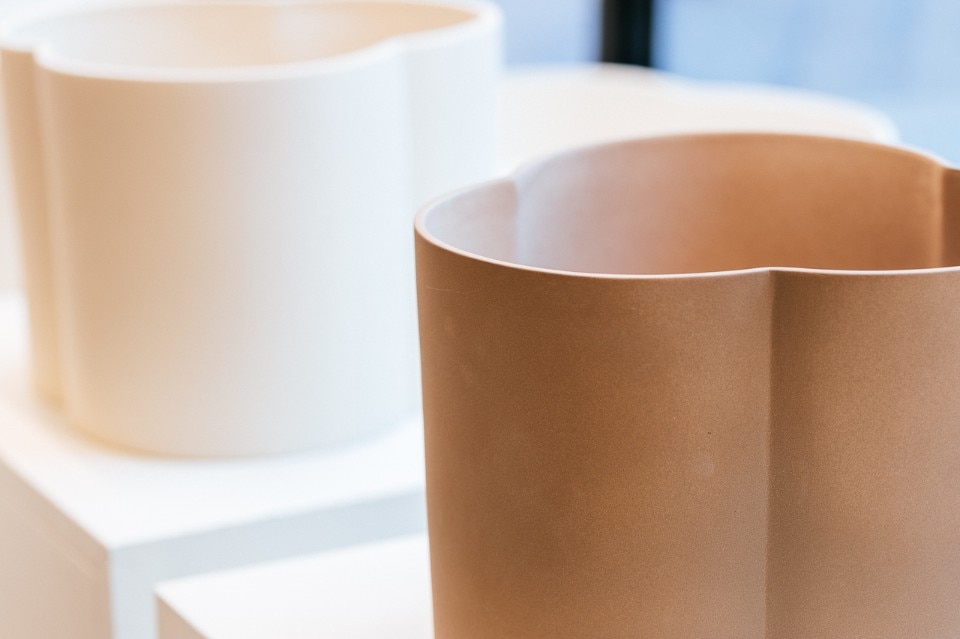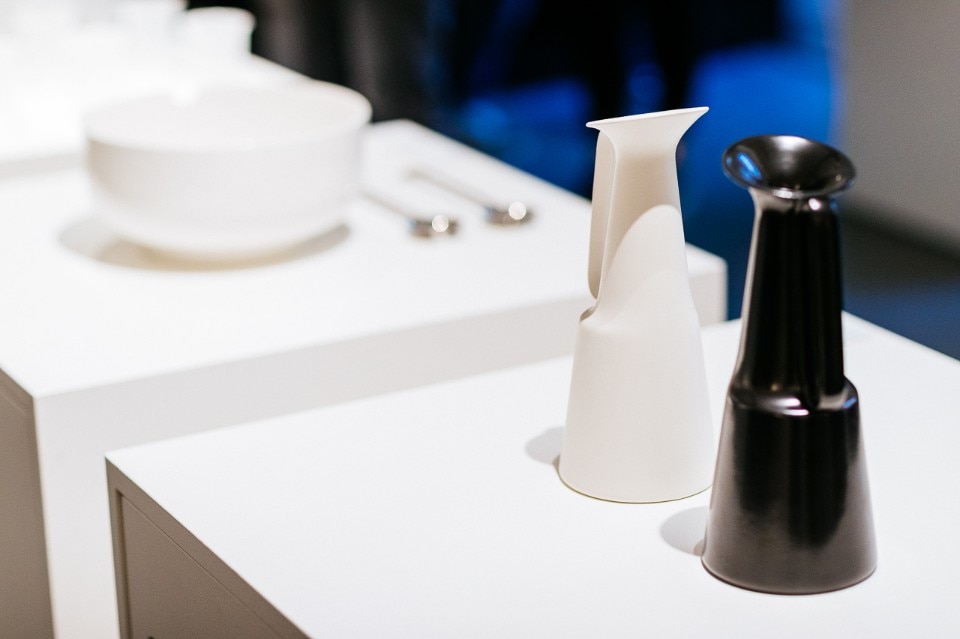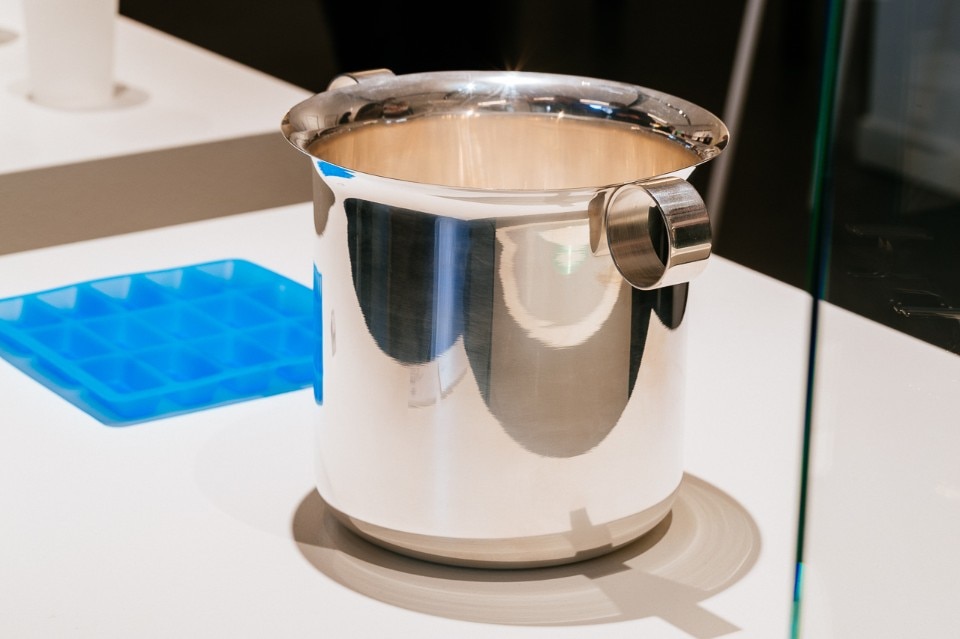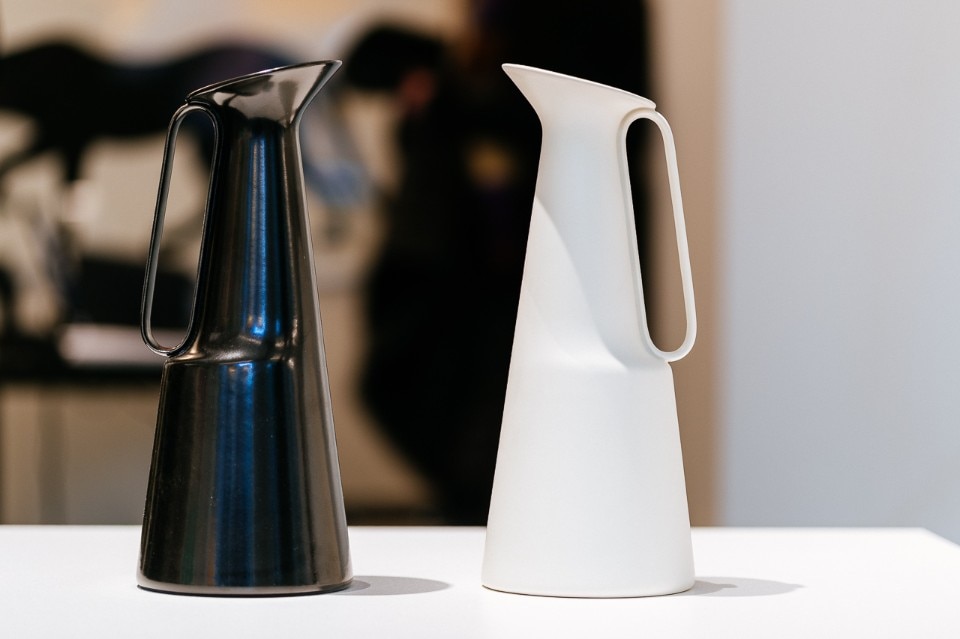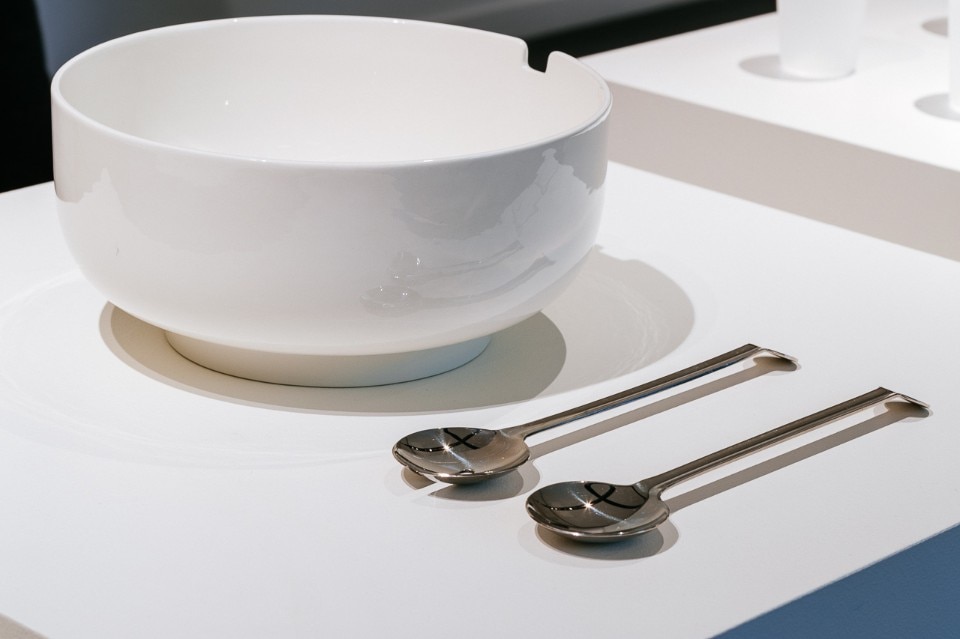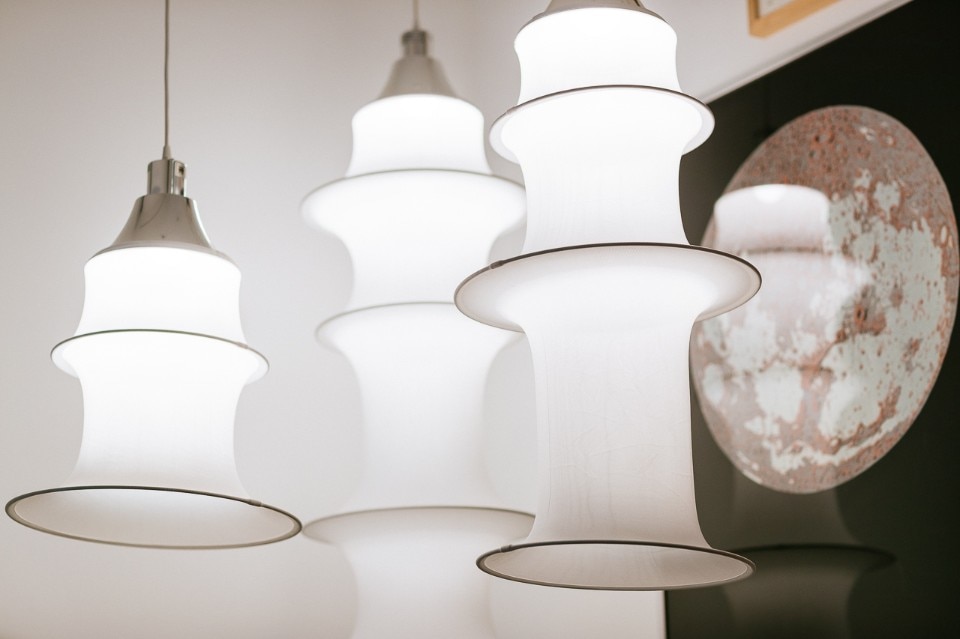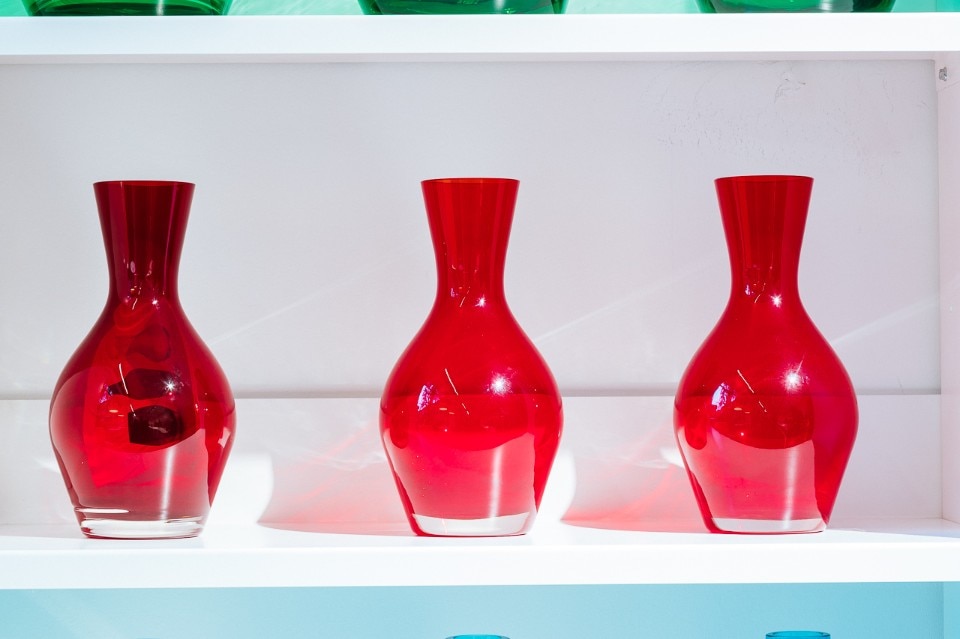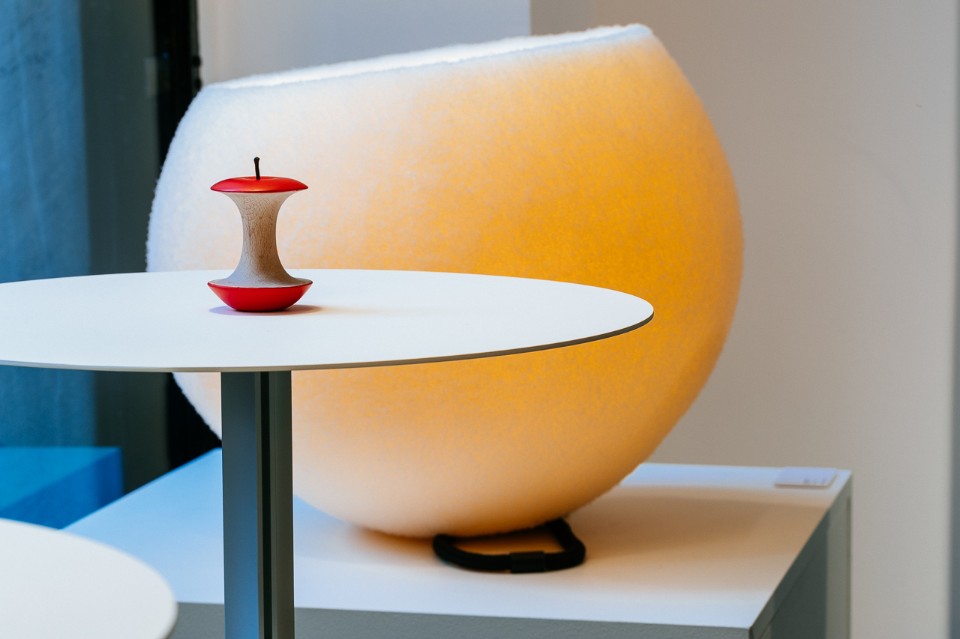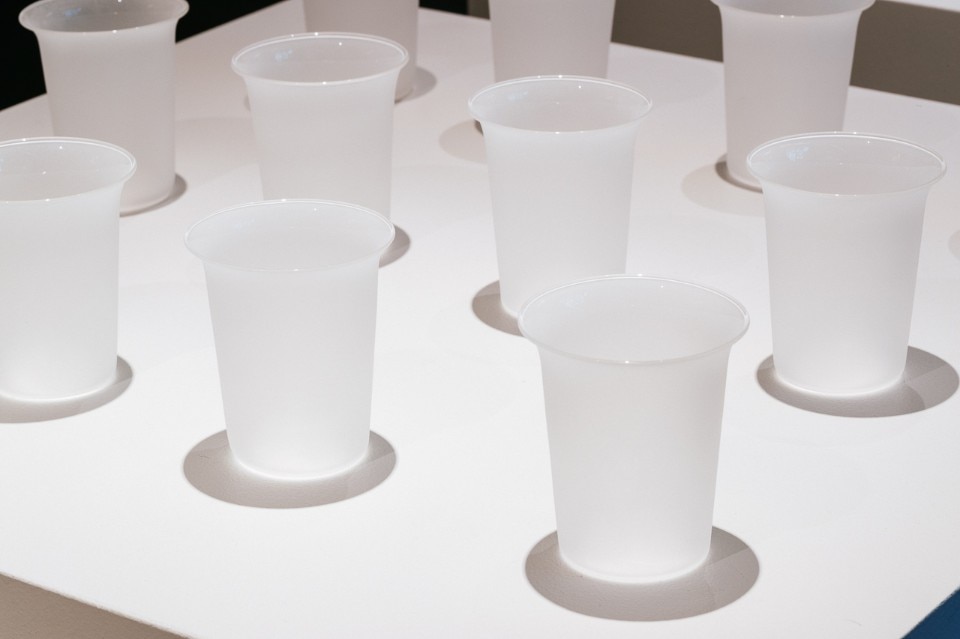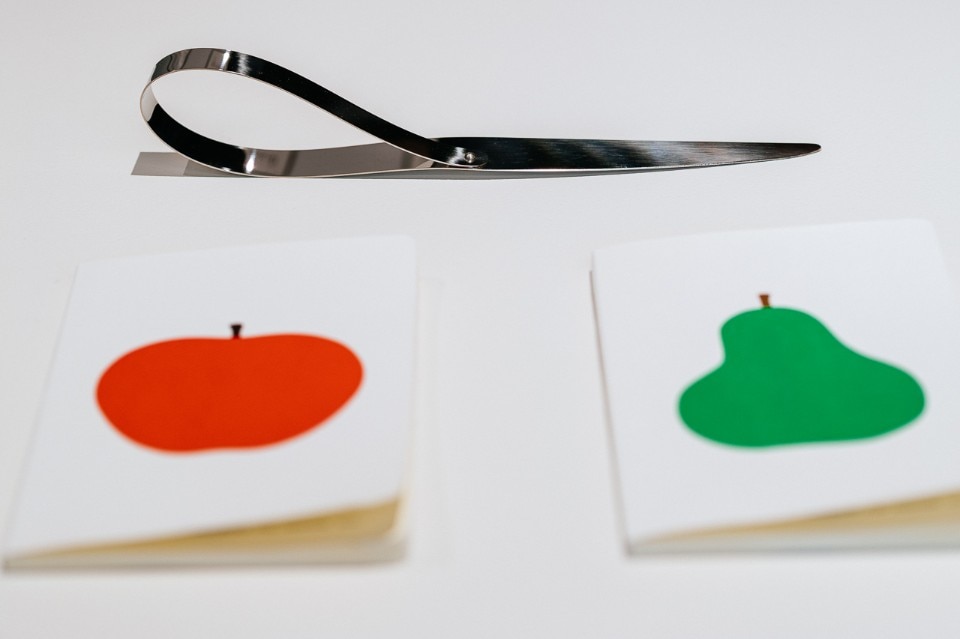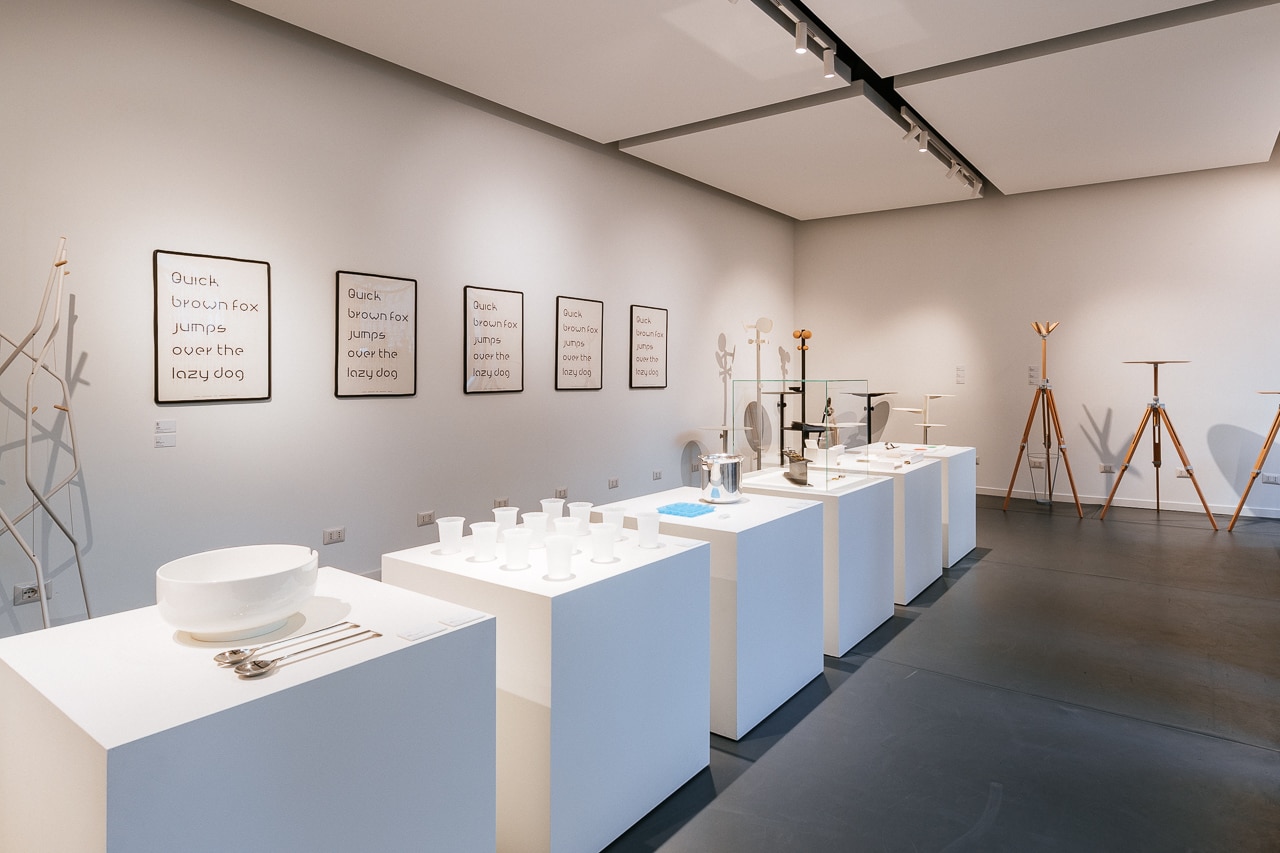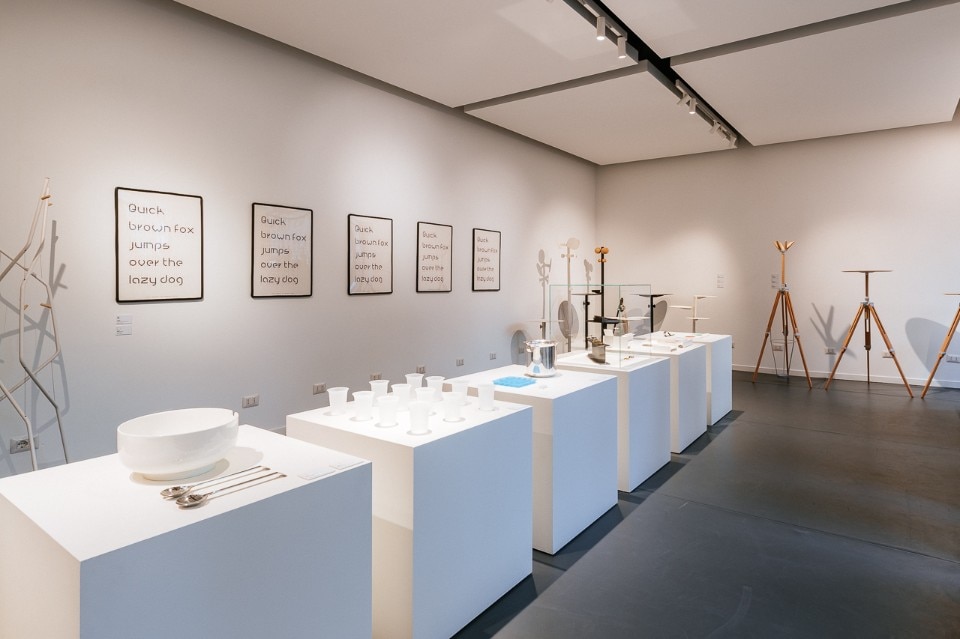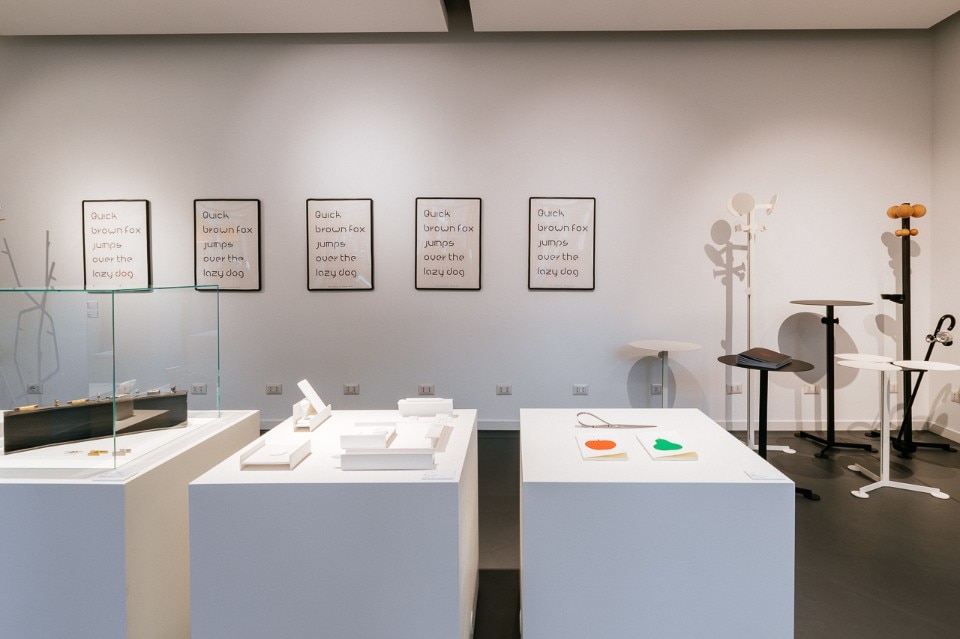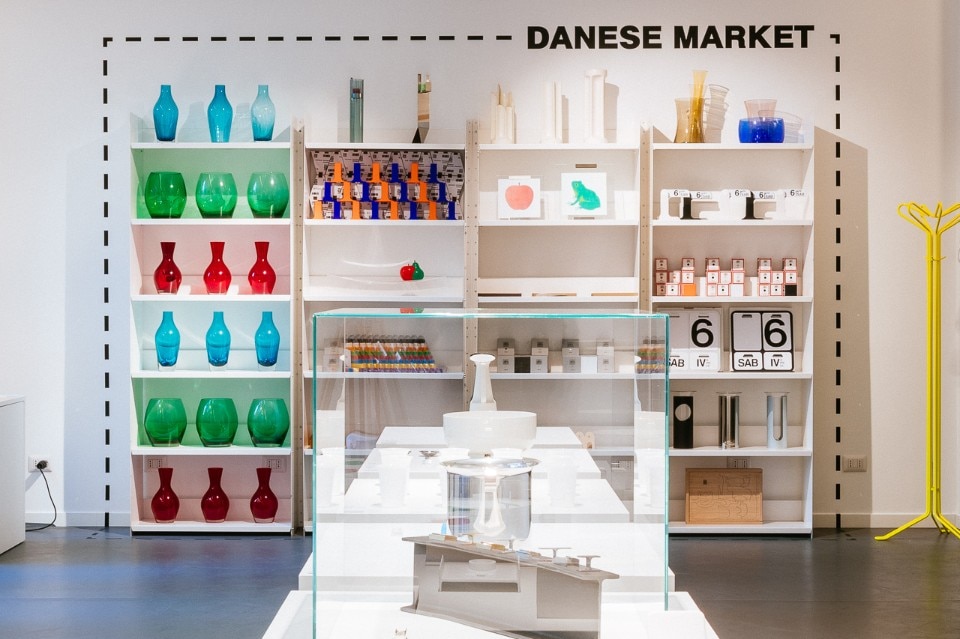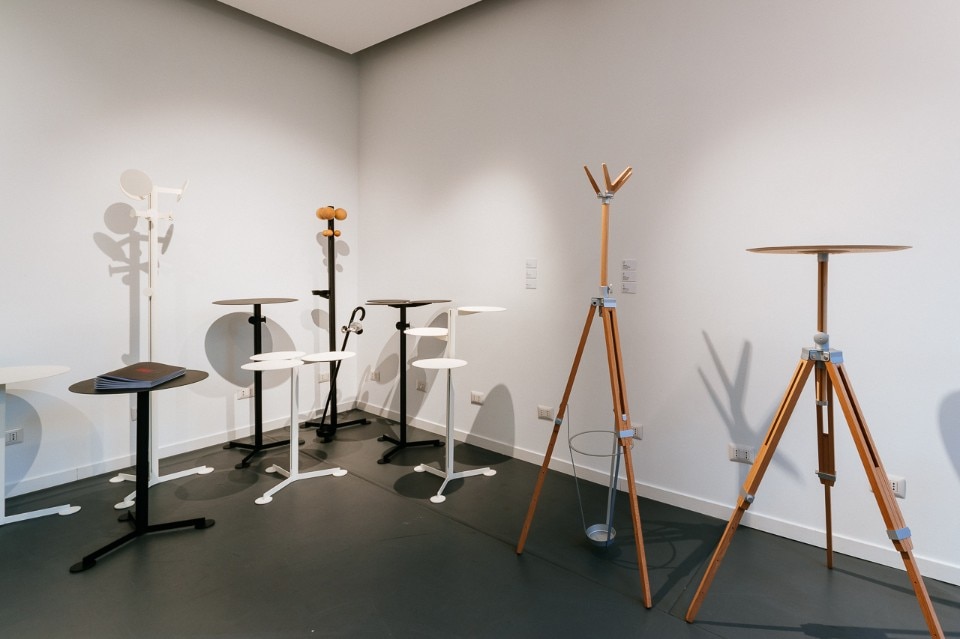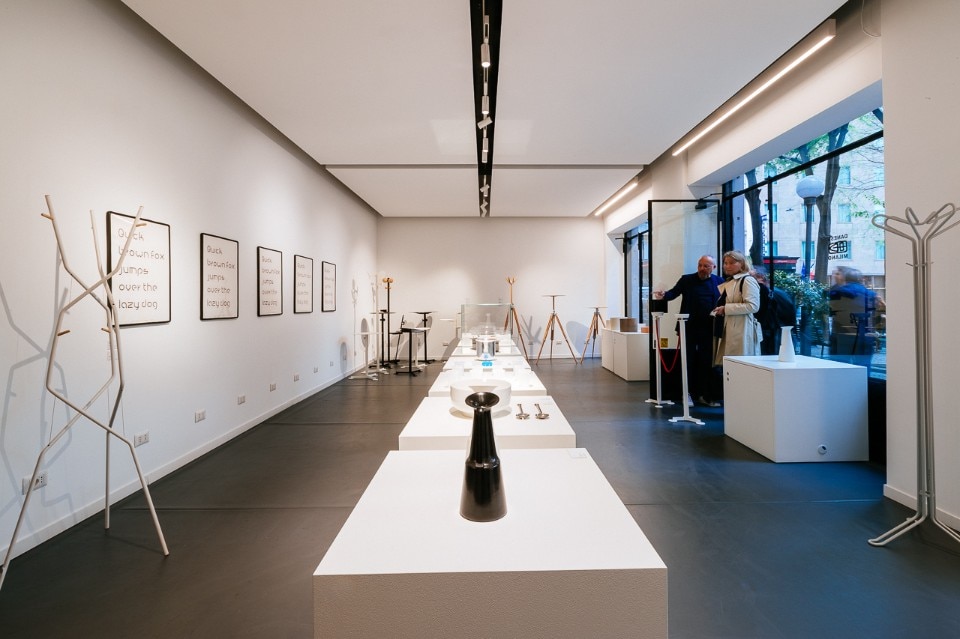Giulio Iacchetti’s work is the living proof of how reductive it would be to consider a designer simply as a “designer of products”. Probably one of the most established exponents of collaborative design, creating synergies with a variety of designers (see Design alla Coop), Iacchetti also works with companies finding ways of shaping their visions and identities even before thinking of objects and images. In his wide-ranging conception of design, a project is not the result of one single designer, but the outcome of a shared effort of many different people working together.
We meet him in his studio in Milan: picture shelves with countless objects in all shapes and colours. We sit down, he lights up his large pipe, and we start our conversation.
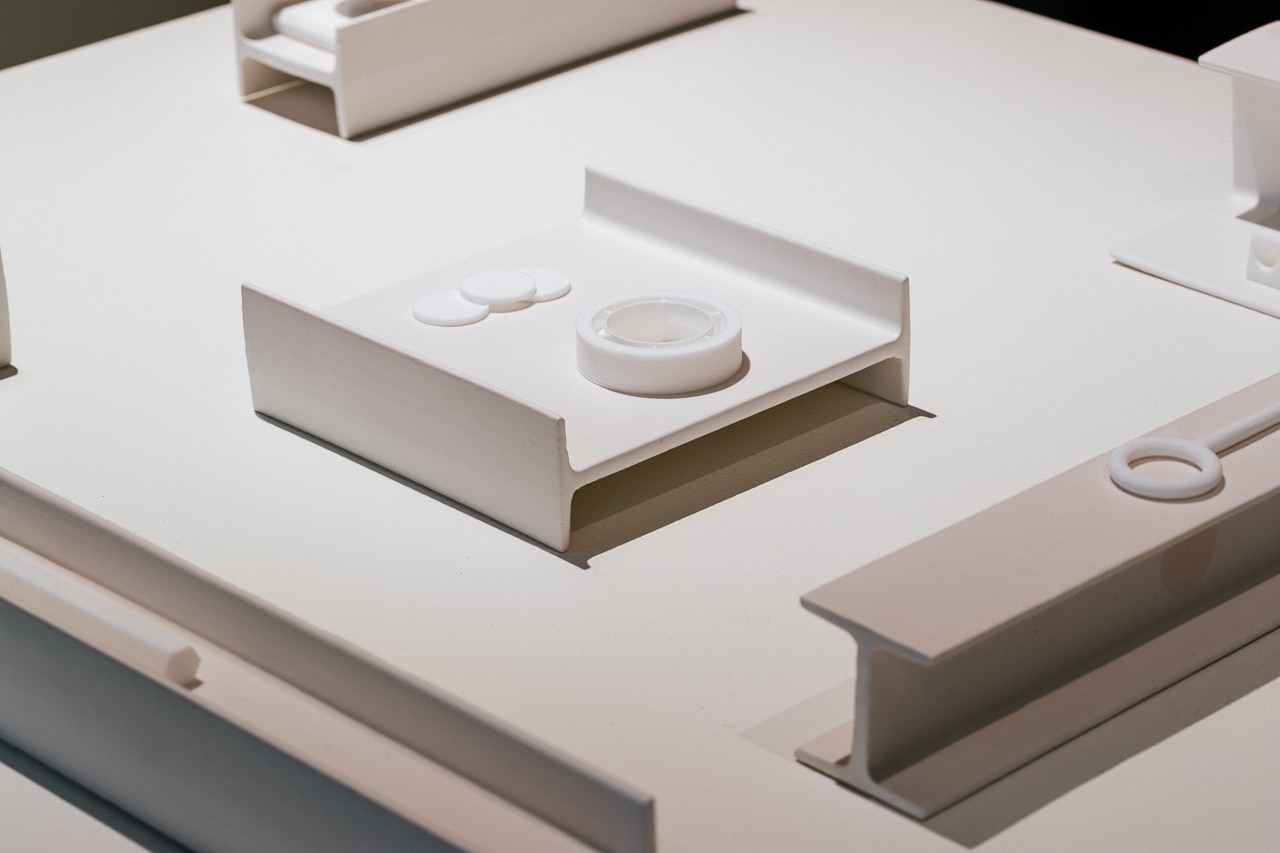
Giulio, these days your work is not only about products: with companies, you design possible journeys.
I think that for a designer stepping into artistic direction means stepping into maturity. To design something other than objects, such as a vision, a journey to embark on with a company, is a form of growth, the acknowledgement that you have become an adult. It certainly reflects the need to give wider scope to your project-making, but also certifies that you believe that task is within reach and that you have enough experience to undertake this type of journey.
And while on this journey, are you always looking for the most rational route possible?
A project’s framework is always rational, however, a project is always the result of unpredictable alchemies. If companies knew perfectly what they wanted, they would not need a designer. Alberto Alessi once told me that Italian companies produce briefs that designers systematically ignore. This might seem a contradiction, but this is how you embark on a journey open to change, and this is the approach that enlightened entrepreneurs like Alessi expect from a designer.
How did you begin your journey with Danese Milano?
Well, Carlotta de Bevilacqua, sole director at Danese, got in touch and asked me if I was willing to work on the next collection. I remember I almost immediately drew a picture, a sort of comic, representing a jug and a glass dreaming of being placed on an Enzo Mari tray. Then I photographed the picture and sent it to Mari along with these words: “today we need to reconnect relations, we need to construct sympathetic thoughts, and I would like to transfer all this into objects.”
That drawing also meant that you intended to make a collection that would be about unity, not about rupture.
Exactly. I would like the Danese objects to unite, avoiding any dividing lines, trying as much as possible to recover those themes that over the years were abandoned. I want to reconnect. I think that those collections whose main objective is to represent the designer are a mistake. One must be respectful of the company one works for, valuing its history: particularly if it’s an important history as in the case of Danese Milano.
I believe a perfect example of this operation is MUTUA, a bowl that you designed starting from an old Enzo Mari project.
That’s right. In the archives, we found an old project by Mari of incredible formal quality: two salad servers that had however remained “orphans” without a matching bowl. So I designed one that would give them a place to live, recreating a family and reconnecting a dialogue with the past.
Could you try summarising the main cultural revolution introduced by a key company such as Danese?
In the second post-war period, the Milanese middle class used redundant objects whose main value was in their artisanal quality, decoration, and use of precious materials, such as silver or root wood. Danese set out to cultivate the utopia of making the project understandable and accessible to all. The quality was no longer only in the craftsmanship of an artisan or in the use of exclusive materials, but also, and especially, in the quality of the project. This was an incredible cultural revolution.
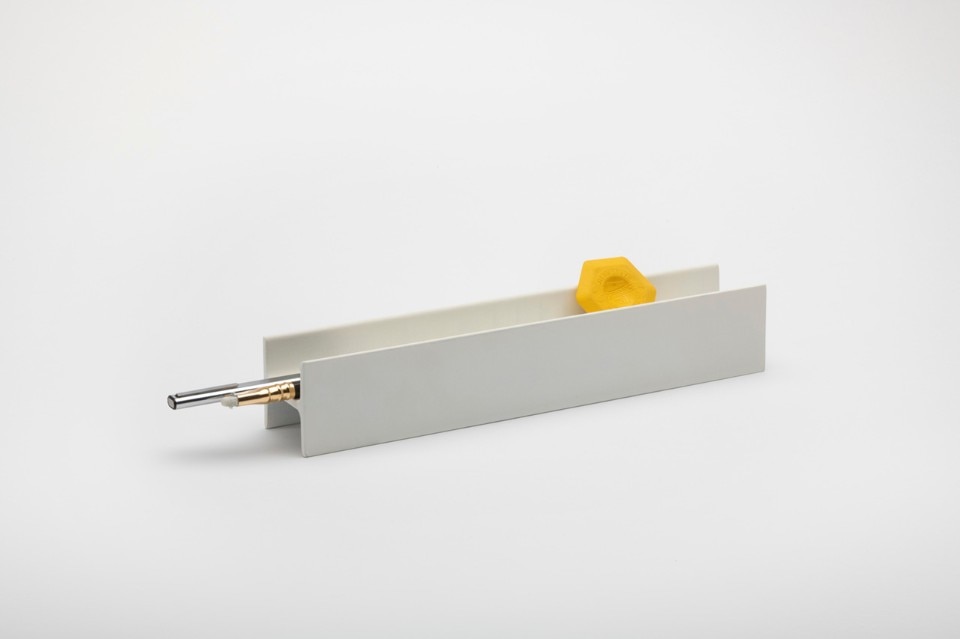
Danese is a company that is still about innovation. It produces objects, but primarily it continues to produce quality. However, several Italian “icon-companies” are running the risk of turning into “museum-companies”. How can this be avoided?
What you say is right. We must be very careful in handling history because, before you know it, you might find yourself lying inside a sarcophagus. And if you close the lid, you might never be able to get out of it again. One day I was talking with an entrepreneur from an established Italian company, and I was complementing her for the extraordinary work she had carried out with a major designer. “Thank you Giulio,” she answered “but in truth we are facing failure. I have been defeated. It’s true, our project was important and sophisticated, but the company has been practically shut down, it could not carry on any longer.” That woman taught me an important lesson, an absolute truth: companies are first of all commercial subjects and commerce is what they live on, otherwise they die. Another thing I understood is this: Italian design companies have enjoyed a mythical past, now seen as a mythological past. But what do we do now? Do we want to celebrate the ashes, or do we want to relight the fire? If that is what we want to do, there is no alternative, we must continue with their research being able to update it to our present with the right sensibility and project-quality.
And where are we to find this “project-quality”?
That I do not know. There is no definitive answer to that question. But I will tell you one thing: one of the most exciting moments I share with my kids is when I put them to bed and they say “daddy, tell us a story”. For them that is a way of stopping time, it is their need to dream on a little longer. Even as adults we all need stories: we read books, watch films, or listen attentively other people’s stories. This is the hidden force of objects: they tell us stories. All this is probably part of the world of uselessness. Perhaps that might be hard to admit, but often the things we believe to be useless are the ones we need the most.
- Location:
- Danese Milano
- Address:
- Piazza San Nazaro in Brolo 15
- City:
- Milan


